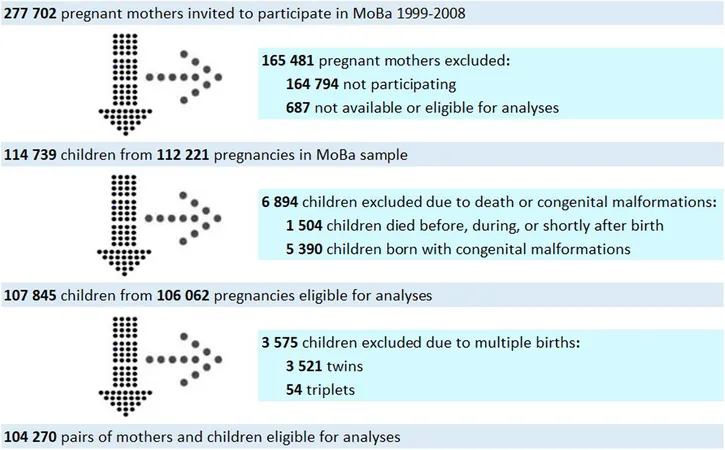
Revolutionary Study Reveals Prevention and Screening Are Key to Cutting Cancer Deaths!
2025-01-16
Author: Benjamin
Revolutionary Study Reveals Prevention and Screening Are Key to Cutting Cancer Deaths!
In a groundbreaking study, researchers have uncovered that the significant decline in cancer-related deaths over the past 50 years can largely be attributed to prevention and screening strategies. The findings, published in JAMA Oncology, emphasize the critical role that these efforts play alongside improved treatments, particularly in the battle against some of the most common cancers.
From 1975 to 2020, the overall mortality rate from various cancers in the U.S. decreased significantly, thanks to various initiatives aimed at reducing incidences and catching diseases early. Researchers led by Drs. Katrina Goddard and Philip Castle from the NIH utilized sophisticated models from the Cancer Intervention and Surveillance Modeling Network (CISNET) to dissect the contributions of prevention, screening, and treatment.
Their analysis focused on five prevalent cancers: breast, cervical, colorectal, lung, and prostate. They simulated different future scenarios for cancer mortality rates, ranging from no advancements at all to scenarios with significant improvements in prevention, screening, and treatment.
Staggeringly, nearly 6 million deaths were prevented due to a combination of these strategies, with approximately 4.75 million—an impressive 80%—attributed specifically to prevention and screening efforts. The effectiveness varied by cancer type; for example, a remarkable 98% of lung cancer deaths were prevented largely through anti-smoking initiatives alone. Meanwhile, cervical cancer fatalities were mainly reduced due to screening processes that effectively identified and removed pre-cancerous cells. Interestingly, breast cancer’s mortality reduction demonstrated a different trend, with only about 25% of averted deaths linked to regular mammograms, emphasizing that most improvements stemmed from advancements in treatment.
Dr. Goddard highlighted the surprising finding that many might assume treatment advancements were the primary drivers behind mortality reductions when, in fact, prevention and screening had a dominating effect over the last four-and-a-half decades. She stated, “Eight out of 10 deaths from these five cancers that were averted over the past 45 years were due to advances in prevention and screening.”
Dr. Castle further underscored the importance of these strategies, stating that they do not only save lives but also maintain the wellbeing of healthy individuals. He reiterated the necessity for persistent research into innovative prevention and screening methods for other cancer types, hinting at untapped potential that could further lower mortality rates.
As advancements continue, newer initiatives, such as lung cancer screenings and the HPV vaccination to combat cervical and other HPV-related cancers, have yet to make a maternal impact. These tools hold promise for additional reductions in cancer deaths but were not part of the study period.
However, it’s crucial to remain vigilant, as the study did not take into account potential downsides of these interventions, such as false-positive results, overdiagnosis during screenings, or the overall quality of life implications for patients. As researchers look to the future, fine-tuning and personalizing screening recommendations will be essential in maximizing benefits and minimizing risks.
The takeaway is clear: the fight against cancer is not just about cures but also prevention and early detection. With concerted efforts and ongoing research, the medical community can continue paving the way towards even greater strides in cancer mortality reduction! Stay informed about these developments—your life may depend on it!









 Brasil (PT)
Brasil (PT)
 Canada (EN)
Canada (EN)
 Chile (ES)
Chile (ES)
 Česko (CS)
Česko (CS)
 대한민국 (KO)
대한민국 (KO)
 España (ES)
España (ES)
 France (FR)
France (FR)
 Hong Kong (EN)
Hong Kong (EN)
 Italia (IT)
Italia (IT)
 日本 (JA)
日本 (JA)
 Magyarország (HU)
Magyarország (HU)
 Norge (NO)
Norge (NO)
 Polska (PL)
Polska (PL)
 Schweiz (DE)
Schweiz (DE)
 Singapore (EN)
Singapore (EN)
 Sverige (SV)
Sverige (SV)
 Suomi (FI)
Suomi (FI)
 Türkiye (TR)
Türkiye (TR)
 الإمارات العربية المتحدة (AR)
الإمارات العربية المتحدة (AR)